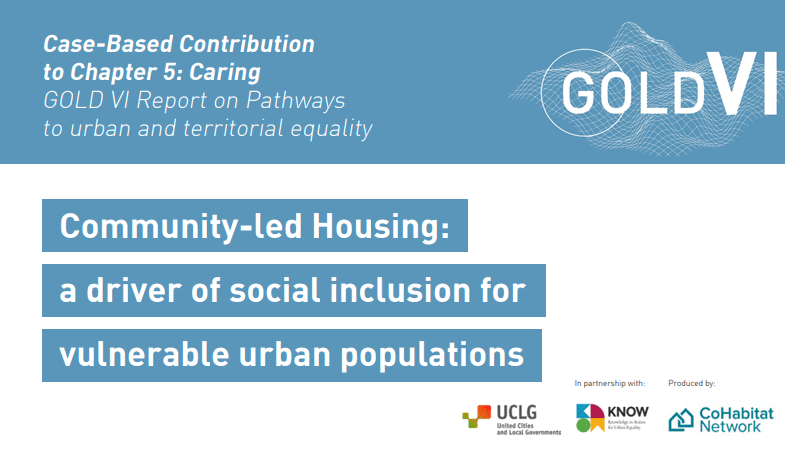Community-Led Housing: a driver of social inclusion for vulnerable urban populations
UpdatedGOLD VI report
As part of the UCLG GOLD V1 Report, the CoHabitat Network has contributed a number of case studies based on their experience of successful projects overcoming urban and territorial inequalities.
Here World Habitat and urbaMonde look at how Community-Led Housing can be the driver of social inclusion for vulnerable urban populations.
AUTHORS
Nina Quintas (urbaMonde) and Mariangela Veronesi (World Habitat).
CITIES/COUNTRIES IT COVERS
United States and Canada; Geneva (Switzerland); Sydney (Australia); London (United Kingdom).
▶ Click here to read the full case study (PDF)
SUMMARY
Community-led housing (CLH) is a key mechanism to deliver housing through non-speculative, affordable models, making cities and places more financially inclusive. In addition, CLH projects contribute to housing rights by offering more than just affordability. They also play an important role in integrating practices of care and addressing the needs of more marginalised communities, and/or groups with specific needs.
For example, student-led housing cooperatives emerged to facilitate the access to affordable housing for students, such as La Cigüe (Switzerland), NASCO (United States and Canada), or STUCCO (Australia). This also enables the right to education and improves life opportunity outcomes, especially for students without wealthy backgrounds. In addition, self-management also provides a supportive and enriching environment.
Tonic Housing was conceived to tackle the fact that, in addition to having care needs related to the process of ageing, older LGBTQ+ people tend to be disproportionately affected by isolation and housing insecurity. As a result, they have developed the first LGBTQ+ affirming urban community in the UK, which will jointly address inclusion, connectivity, sense of security, along with health and wellbeing. Their model is co-designed with a Community Panel to ensure that their housing and care solutions reflect the needs of a diverse community and take an intersectional approach.
CLH projects such as these can often be enabled or supported by public authorities, such as through leasing of land, finance or technical assistance. These partnerships generate great social value, with systems of support that are people-led and people-centred and which - though partially enabled by the local authorities - are also not dependent on direct public provision
▶ Click here to read the full case study (PDF)
